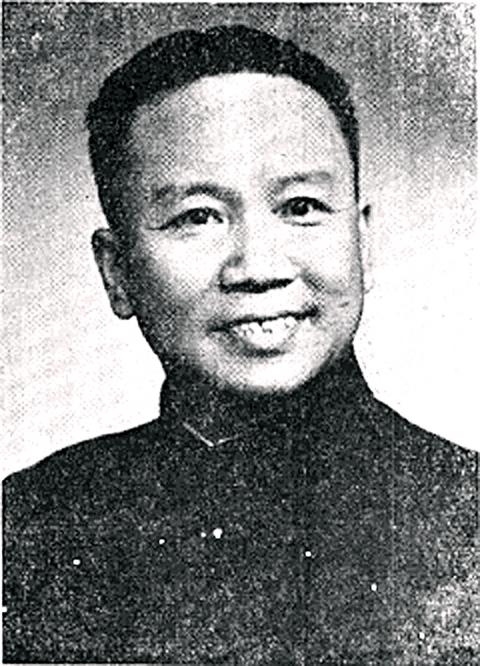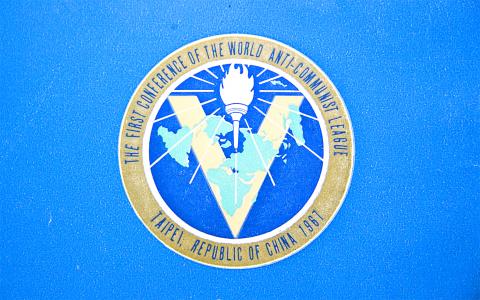Taiwan in Time: Sept. 21 to Sept. 27
After nearly a year of preparations, more than 230 delegates from 64 countries and regions descended upon Taipei on Sept. 25, 1967 to take part in the World Anti-Communist League’s (WACL) inaugural conference. Also in attendance were 12 anti-communist organizations and observers.
As a founding member of the league’s predecessor, the Asian People’s Anti-Communist League (APACL), Taiwan was chosen to host the event during a meeting to discuss the APACL’s expansion in November 1966.

Photo courtesy of Wikimedia Commons
A recap of the conference published by WACL stated that the league decided to meet in Taiwan because it was the “most resolute in its anti-communist position” and “showed the most vigorous anti-communist spirit.”
The APACL was started in 1954 by Chinese Nationalist Party (KMT) leader Chiang Kai-shek (蔣介石), Philippine president Elpidio Quirino and South Korean president Syngman Rhee.
By November 1966, as the APACL had expanded to Australia and Africa with 27 members, it decided to go global during a meeting in Seoul.

Photo: Han Cheung, Taipei Times
“To defeat the communist threat to the world, the anti-communist frontlines of the free people must be expanded to the entire world,” then-South Korean president Park Chung-hee announced during the opening ceremony.
Representatives from 11 countries and three anti-communist organizations met the following week and drafted the WACL charter, which took effect April 1967. The charter called for regional organizations in six regions: Asia, Middle East, Africa, Europe, North America and Latin America.
The charter clearly states that communists are “evil” beings who plan to “enslave the world” and anti-communists as “lovers of freedom,” with a mission to “push for true freedom based on justice and human dignity.”
Furthermore, it states that communist thought is “anti-humanity, anti-rationality, anti-society and anti-science” and can only bring disaster and pain to the world. To the league founders, co-existing with communists is no longer possible and they must be eradicated.
The first conference opened with Ku Cheng-kang (谷正綱) as both event and organization chairman. According to his biography, Ku, who was born in China, joined the KMT in 1924 and rose to the post of the Republic of China’s minister of social affairs. He followed Chiang to Taiwan after the KMT retreat in 1949, serving as minister of the interior and also becoming involved in Chinese refugee activities. Ku remained honorary chairman for the WACL until he died in 1993.
In a speech, Ku described Taiwan as “a lighthouse of freedom in the Pacific Ocean.”
“All anti-communists in the world now see Taiwan as an important stronghold, as a place to cultivate hope for the future,” he added. “A lot of attendees have never been to Taiwan before, but after seeing what we’re doing here, I’m sure they now have more courage and determination to continue the battle against the communists.”
The meeting officially began on the morning of Sept. 25 at the recently-completed Sun Yat-sen Hall (中山樓) in Yangmingshan (陽明山), with Chiang delivering the opening speech. Seven meetings were held over the next five days at the Ambassador Hotel (國賓飯店). Attendees worked on electing officials, approving new members, setting up committees, sharing reports on communist activities in various countries, devising anti-communist methods and denouncing communist ideals.
Taiwan representatives also screened a self-produced documentary and put together a photography exhibit, both depicting how terrible life in China was under communist rule.
During the closing ceremony on Sept. 29, Ku announced that the next meeting would be in Saigon — now Ho Chi Minh City.
“I want to invite everyone to the frontlines of the fight against communism,” he said. “I want everyone to witness or experience firsthand communist actions. We hope to, both spiritually and materially, help strike a fatal blow to communists worldwide.”
The league wasn’t without its controversies over the next decades, having been linked to neo-Nazis, anti-Semites and allegedly included people connected to war criminals and death squads.
In 1989, the end of the Cold War began as communist regimes in Europe started to collapse, highlighted by the fall of the Berlin Wall and the destabilization of the Soviet Union.
In response to the changing political scene, on Jan. 1, 1991, the league officially changed its name to the World League for Freedom and Democracy.
Taiwan in Time, a column about Taiwan’s history that is published every Sunday, spotlights important or interesting events around the nation that have anniversaries this week.

Most heroes are remembered for the battles they fought. Taiwan’s Black Bat Squadron is remembered for flying into Chinese airspace 838 times between 1953 and 1967, and for the 148 men whose sacrifice bought the intelligence that kept Taiwan secure. Two-thirds of the squadron died carrying out missions most people wouldn’t learn about for another 40 years. The squadron lost 15 aircraft and 148 crew members over those 14 years, making it the deadliest unit in Taiwan’s military history by casualty rate. They flew at night, often at low altitudes, straight into some of the most heavily defended airspace in Asia.

This month the government ordered a one-year block of Xiaohongshu (小紅書) or Rednote, a Chinese social media platform with more than 3 million users in Taiwan. The government pointed to widespread fraud activity on the platform, along with cybersecurity failures. Officials said that they had reached out to the company and asked it to change. However, they received no response. The pro-China parties, the Chinese Nationalist Party (KMT) and Taiwan People’s Party (TPP), immediately swung into action, denouncing the ban as an attack on free speech. This “free speech” claim was then echoed by the People’s Republic of China (PRC),

Many people in Taiwan first learned about universal basic income (UBI) — the idea that the government should provide regular, no-strings-attached payments to each citizen — in 2019. While seeking the Democratic nomination for the 2020 US presidential election, Andrew Yang, a politician of Taiwanese descent, said that, if elected, he’d institute a UBI of US$1,000 per month to “get the economic boot off of people’s throats, allowing them to lift their heads up, breathe, and get excited for the future.” His campaign petered out, but the concept of UBI hasn’t gone away. Throughout the industrialized world, there are fears that

Like much in the world today, theater has experienced major disruptions over the six years since COVID-19. The pandemic, the war in Ukraine and social media have created a new normal of geopolitical and information uncertainty, and the performing arts are not immune to these effects. “Ten years ago people wanted to come to the theater to engage with important issues, but now the Internet allows them to engage with those issues powerfully and immediately,” said Faith Tan, programming director of the Esplanade in Singapore, speaking last week in Japan. “One reaction to unpredictability has been a renewed emphasis on